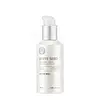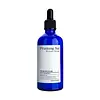What's inside
What's inside
 Key Ingredients
Key Ingredients

No key ingredients
 Benefits
Benefits

 Concerns
Concerns

 Ingredients Side-by-side
Ingredients Side-by-side

Water
Skin ConditioningPropanediol
SolventPanthenol
Skin ConditioningDimethicone
EmollientEthylhexyl Palmitate
EmollientNiacinamide
Smoothing1,2-Hexanediol
Skin ConditioningCaprylic/Capric Triglyceride
MaskingCyclopentasiloxane
EmollientTriceteareth-4 Phosphate
EmulsifyingCaprylic/Capric Glycerides
EmollientGlycol Stearate
EmollientPEG-2 Stearate
EmulsifyingHydroxyethyl Acrylate/Sodium Acryloyldimethyl Taurate Copolymer
Emulsion StabilisingPolysilicone-11
Polymethylsilsesquioxane
Squalane
EmollientBellis Perennis Flower Extract
Skin ConditioningLupinus Albus Seed Extract
Skin ConditioningPolysorbate 60
EmulsifyingMyristica Fragrans Extract
MaskingSodium Hyaluronate
HumectantButylene Glycol
HumectantHexylresorcinol
AntimicrobialChenopodium Quinoa Seed Extract
Skin ConditioningSalix Alba Bark Extract
AstringentAcrylates/C10-30 Alkyl Acrylate Crosspolymer
Emulsion StabilisingPotassium Hydroxide
BufferingDisodium EDTA
Phenoxyethanol
PreservativeEthylhexylglycerin
Skin ConditioningParfum
MaskingWater, Propanediol, Panthenol, Dimethicone, Ethylhexyl Palmitate, Niacinamide, 1,2-Hexanediol, Caprylic/Capric Triglyceride, Cyclopentasiloxane, Triceteareth-4 Phosphate, Caprylic/Capric Glycerides, Glycol Stearate, PEG-2 Stearate, Hydroxyethyl Acrylate/Sodium Acryloyldimethyl Taurate Copolymer, Polysilicone-11, Polymethylsilsesquioxane, Squalane, Bellis Perennis Flower Extract, Lupinus Albus Seed Extract, Polysorbate 60, Myristica Fragrans Extract, Sodium Hyaluronate, Butylene Glycol, Hexylresorcinol, Chenopodium Quinoa Seed Extract, Salix Alba Bark Extract, Acrylates/C10-30 Alkyl Acrylate Crosspolymer, Potassium Hydroxide, Disodium EDTA, Phenoxyethanol, Ethylhexylglycerin, Parfum
Coptis Japonica Extract
AntimicrobialButylene Glycol
HumectantOlea Europaea Fruit Oil
MaskingCaprylic/Capric Triglyceride
Masking1,2-Hexanediol
Skin ConditioningStearic Acid
CleansingPolysorbate 60
EmulsifyingCetearyl Alcohol
EmollientGlyceryl Stearate
EmollientSorbitan Sesquioleate
EmulsifyingGlyceryl Caprylate
EmollientHydroxyethylcellulose
Emulsion StabilisingCarbomer
Emulsion StabilisingArginine
MaskingDimethicone
Emollient
 Reviews
Reviews

Ingredients Explained
These ingredients are found in both products.
Ingredients higher up in an ingredient list are typically present in a larger amount.
1,2-Hexanediol is a synthetic liquid and another multi-functional powerhouse.
It is a:
- Humectant, drawing moisture into the skin
- Emollient, helping to soften skin
- Solvent, dispersing and stabilizing formulas
- Preservative booster, enhancing the antimicrobial activity of other preservatives
Butylene Glycol (or BG) is used within cosmetic products for a few different reasons:
Overall, Butylene Glycol is a safe and well-rounded ingredient that works well with other ingredients.
Though this ingredient works well with most skin types, some people with sensitive skin may experience a reaction such as allergic rashes, closed comedones, or itchiness.
Learn more about Butylene GlycolThis ingredient is an emollient, solvent, and texture enhancer. It is considered a skin-softener by helping the skin prevent moisture loss.
It helps thicken a product's formula and makes it easier to spread by dissolving clumping compounds.
Caprylic Triglyceride is made by combining glycerin with coconut oil, forming a clear liquid.
While there is an assumption Caprylic Triglyceride can clog pores due to it being derived from coconut oil, there is no research supporting this.
Learn more about Caprylic/Capric TriglycerideDimethicone is a type of synthetic silicone created from natural materials such as quartz.
What it does:
Dimethicone comes in different viscosities:
Depending on the viscosity, dimethicone has different properties.
Ingredients lists don't always show which type is used, so we recommend reaching out to the brand if you have questions about the viscosity.
This ingredient is unlikely to cause irritation because it does not get absorbed into skin. However, people with silicone allergies should be careful about using this ingredient.
Note: Dimethicone may contribute to pilling. This is because it is not oil or water soluble, so pilling may occur when layered with products. When mixed with heavy oils in a formula, the outcome is also quite greasy.
Learn more about DimethiconePolysorbate 60 is used to help stabilize products. It is a surfactant and emulsifier. These properties help keep ingredients together in a product. Surfactants help reduce surface tension between ingredients with different states, such as liquids and solids. Emulsifiers help prevent oils and waters from separating.
Polysorbate 60 is sorbitol-based and created from the ethoxylation of sorbitan. Ethoxylation is a chemical reaction used to add ethylene oxide. Sorbitan is a the dehydrated version of sorbitol, a sugar found in fruits.
In this case, the 60 comes from reacting 60 units of ethylene oxide with sorbitan.
Polysorbates are commonly used in medicine and foods.
Learn more about Polysorbate 60